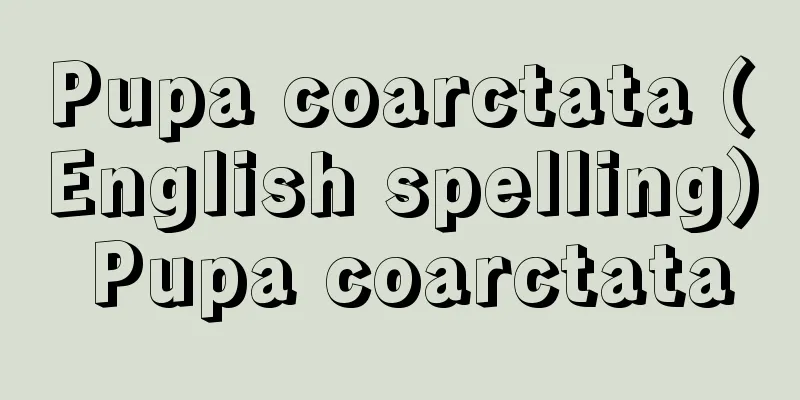Lower attack - Shigasane

|
A type of clothing worn by male nobles. It is worn under the hanpi (half-sleeved garment) or directly under the ho (robe). It is a hanging garment with a double-width body and is open at the armpits. From the late Heian period onwards, as clothing became larger and sleeves became wider, the hem of the back of the undergarment (also called the buttocks) became longer. Therefore, when sitting in the sokutai, the hem was folded up, when sitting on the bamboo mats of the sleeping palace, it was hung on the railing, and when walking, it was folded up and hung on the sekitai (stone belt) or sword (tachi). For the convenience of wearing the undergarment, it was called a bekkyo (separate hem) for all but the Emperor and Crown Prince, and was separated from the back waist and tied with a string over the undergarment and pulled backwards. For ranks of nobility and above, the texture was aya on both sides in winter, and koku on both sides in summer. For ranks of courtiers and below, plain silk on both sides in winter, and plain silk on both sides in summer. The colors were somewhat free, with nobles and above wearing white on the outside in winter, safflower on the inside, light green, or two-tone indigo on both sides, and safflower or green leaf on both sides in summer. For ranks of nobility and below, the texture was often white on the outside in winter, safflower on the inside, and two-tone indigo on both sides in summer. Attendants on an imperial journey wore sokutai, and on the day of the event, they would wear whatever texture, color, and pattern they liked for everything except the robe. This was called a one-day fine outfit, but the color of the undergarment was changed and it was called a dyed undergarment for a more showy look. [Takada Yamato] ©Minoru Sugai formal attire Source: Shogakukan Encyclopedia Nipponica About Encyclopedia Nipponica Information | Legend |
|
公家(くげ)男子衣服の一種。束帯(そくたい)の内着で、半臂(はんぴ)の下、または直接に袍(ほう)の下に着る。垂領(たりくび)、身頃二幅(みごろふたの)仕立てで腋(わき)あけ形式。平安時代後期以降、衣服の大形化、広袖(ひろそで)化とともに下襲の後ろ身の裾(きょ)(尻(しり)ともいう)が長くなった。そこで、束帯姿で座るときは裾を折り畳み、寝殿の簀子(すのこ)に座るときは勾欄(こうらん)に掛け、歩行のときは折り畳んで石帯(せきたい)や剣(たち)に掛けたりした。下襲着用の便宜上、天皇、皇太子のほかは別裾(べっきょ)とよんで、後腰部から切り離し、紐(ひも)をつけて下襲の上から締めて後方に引いた。 地質は公卿(くぎょう)以上、冬表裏とも綾(あや)、夏縠(こく)。殿上人(てんじょうびと)以下、冬表裏とも平絹、夏無文縠。色目(いろめ)はやや自由で、公卿以上、冬表白、裏蘇芳(すおう)、萌黄(もえぎ)、二藍(ふたあい)などの襲色目、夏蘇芳、青朽葉(くちば)など。殿上人以下は冬表白、裏蘇芳、夏二藍の場合が多い。行幸の供奉(ぐぶ)などに束帯を着装して、その当日のみ、袍以外は好みの地質、色目、文様を使い、これを一日晴(いちにちばれ)の装束といったが、ことに下襲の色をかえ、二倍(ふたえ)織物や刺しゅうあるいは文様染めを施し、華やかなものとして染下襲と称した。 [高田倭男] ©須貝 稔"> 束帯 出典 小学館 日本大百科全書(ニッポニカ)日本大百科全書(ニッポニカ)について 情報 | 凡例 |
Recommend
Kuma [village] - bear
A village in Kuma District, in the southern part o...
Small sea anemone - Small sea anemone
A marine animal belonging to the phylum Cnidaria,...
Ebirashida - Ebirashida
… G . jessoensis (Koidz.) Koidz. grows well on li...
Ofuku (doll) - Ofuku
...In folk performing arts, they are not just see...
Tenma
A commercial and industrial district in the south...
Matching - Aikata
A term used in Japanese music. It refers to a len...
Mittelland Canal - Mittelland Canal (English name)
A 330 km long canal stretching from the Bergeshebe...
Theory of Extrusion and Suction - Theory of Extrusion and Suction
…Population migration is therefore said to be an ...
Cetane number - Setanka (English spelling)
It is an index showing the ignition quality of di...
Phryne (English spelling)
A famous courtesan (hetairai) of the 4th century B...
Wendy - Wendy
…It first appeared in the novel The Little White ...
Helberd-leaved rose mallow
…It usually blooms from the second year. Closely ...
Subtropical high pressure - Anetai high pressure
A type of high pressure system that exists almost...
Durand, P.
...This mistake was believed to be correct until ...
Seedling raising - Ikubyo
Raising seedlings. Seedlings are young plants of ...









